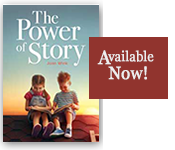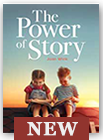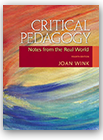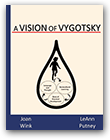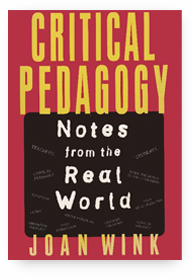Except from:
Wink, J. (2000, 2/e, pp.100-101) Critical Pedagogy: Notes from the REAL WORLD. Boston, MA: Addison-Wesley Longman.
What does a Vygotskian class look like? An Example from Post Secondary. It has been my experience that sometimes teachers might teach about Vygotsky but not adapt their own personal pedagogy to create a context whereby students experience a Vygotskian classroom. Following is a description of a postsecondary classroom that had the experience but did not see it, nor recognize it, until they articulated it. (LeAnn Putney, personal communication, December 15, 1988):
“What does a Vygotskian class look like?” the graduate student asked after they had studied Vygotsky.
“Well, what have we been doing since day one of class in this course?” the professor replied.
“We keep an issues log each night as we read our assignments,” the first student replied.
“Then, when we get to class, we sit in small groups and discuss the issues each of us has highlighted,” replied the second student.
“Next, our whole class discussion is determined by our logs, not from the text and not from your log,” the third graduate student said to the professor.
“How did we create the midterm project?” the professor asked the class.
“Oh, yeah,” the first student replied, “I remember that we created six different possibilities for a mid-term, and each student could choose one. Some of us renegotiated our choices a couple of times.”
“How did we decide to grade the various projects?” the faculty member queried.
“We created a rubric together one night in class,” a student answered.
“I remember that some of us read the same difficult journal article and then got together and talked about it and then presented it for our colleagues in class,” another students shared.
“I knew when I assigned those readings, that on an individual basis, they might be a bit beyond you because you would be grappling with new academic thought and language. But, I remember that each group had a dynamite demonstration of the materials so that your colleagues could do their own sense-making of those same articles. Together, it seems that you have extracted meaning from some very heavy readings that you all complained about from the first day,” the professor said and the students smiled knowingly.
“And look at how much we learned,” the professor concluded. “Now my question of you is: What will you do with the new knowledge which you have generated?”
